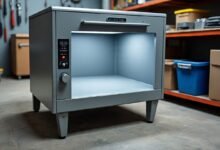Toolkit to Fighting the Coronavirus the Smartphone

Do you know The toolkit to fighting the Coronavirus is the smartphone? Smartphones are a terrific example of how far technology has advanced in recent years. Today, we have all the information we could possibly need at our fingertips, paired with programmes that let us carry out various tasks. Technology offers enormous potential not just for the future but also for the present because of how rapidly it has advanced in recent years. For instance, the current pandemic makes technology more important than ever. The spread of the coronavirus can be halted and lives can be saved by utilising technology in a recently found approach.
Smartphones are excellent tools for use in the battle against viruses like the coronavirus. Their powers and features, as well as the fact that they are portable, simple to use, and practically everyone has one, make them the most desirable and alluring feature. As the smartphone industry develops, it is clear that functions like the camera have exceeded expectations. It is unnecessary to carry a personal handheld camera because the same technology may be found in our pockets and is more capable. That is the promise that this growth exhibits. There is more that smartphones may be. In light of this, they could potentially contribute to the pandemic’s lifesaving efforts.
Read More:Trends Ideas and Strategies for Fintech Marketing in 2023
How can smartphones be used to combat the virus?

By utilising cell phone tower, GPS, and Wi-Fi signals, smartphones and some of their less advanced cousins can assist in locating someone. However, Bluetooth, which enables connecting to neighbouring devices, is the main piece of technology included in smartphones that will aid in the fight against the virus. The smartphone can track people’s locations by logging a variety of location information. This will assist authorities in determining the number of people who abide by the rules, but it can also be used for contact tracing.
The spread of the virus can be stopped by using cellphones for contact tracing to identify people who have the infection and who they have been in contact with. Surveys can be completed on smartphones as well. The survey can assist in collecting data on individuals’ medical histories while integrating their locations for a complete picture. For instance, indications indicate that the virus has spread to North West London. Authorities may be able to better understand the virus’s spread in these communities by using smartphones.
How a smartphone can help with contact tracing
They can record other phones they have been in close touch with by using Bluetooth on a smartphone. For instance, if someone contracts the virus, the smartphone will identify the infection and prepare a list of probable contacts to whom they may have exposed others and to whom they may have transmitted the virus. This will cause the phone and accompanying software to send messages to those individuals advising them to be checked for the virus or to isolate themselves. Putting this procedure in place is more effective and may be more successful than using time-consuming, labor-intensive traditional tracing techniques like interviews.
The Bluetooth system is far from ideal, much like any newly developed technologies that have not yet been thoroughly tested. For instance, two phones may detect each other at a distance of 15 feet and record the calls as entries. The smartphone will identify near contact even if users are just separated by a wall in different rooms. There is still work to be done on the app, but developers have been focusing on more clearly defining what counts as physical contact between two devices. However, GPS continues to be less precise than Bluetooth.
In the past, smartphones were excellent for many things, but in the present, they may be the answer to our prayers. The future of the smartphone and smartphone market appears bright, and despite the possibility that the pandemic has had an impact on it, there is no doubt that the sector will recover given the right use of it in the fight against the virus.










